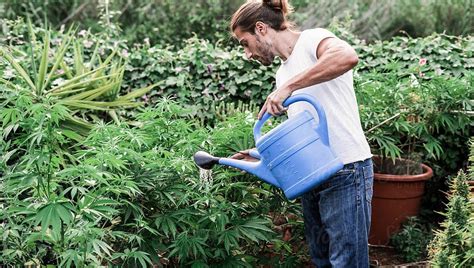How Often To Water Autoflowers
Ronan Farrow
Mar 23, 2025 · 3 min read

Table of Contents
How Often to Water Autoflowering Cannabis Plants? A Comprehensive Guide
Autoflowering cannabis plants, unlike their photoperiod counterparts, are known for their ease of cultivation and fast flowering cycles. However, even with their relatively low-maintenance nature, proper watering is crucial for maximizing yield and ensuring healthy growth. This guide will help you understand how often to water your autoflowers, focusing on various factors that influence watering frequency.
Understanding Your Autoflower's Water Needs
The most important thing to remember is that there's no one-size-fits-all answer to how often you should water your autoflowers. The frequency depends on several key factors:
1. The Size of Your Pot and Growing Medium:
- Smaller pots: Smaller pots dry out much faster than larger ones. You'll likely need to water more frequently with smaller containers.
- Growing medium: Different mediums retain water differently. Coco coir, for example, tends to dry out faster than soil. Hydroponic systems require a completely different approach to watering.
2. Environmental Conditions:
- Temperature and humidity: Hotter temperatures and lower humidity will cause your plants to dry out more quickly. You'll need to water more often in these conditions.
- Airflow: Good airflow around your plants helps them dry out evenly, preventing root rot. However, strong airflow will increase the rate of water evaporation from the soil.
3. The Stage of Growth:
- Seedling stage: Seedlings are extremely sensitive to overwatering. Water sparingly during this phase.
- Vegetative stage: As your plants enter the vegetative stage, their water needs will increase.
- Flowering stage: The flowering stage usually requires the most frequent watering, especially during the peak of flowering.
4. Your Plant's Appearance:
- Wilting leaves: If your plants show signs of wilting (drooping leaves), it's a clear sign that they need water. However, don't wait until they severely wilt.
- Dry soil: The easiest way to know if it’s time to water is to check the soil moisture. Stick your finger about an inch or two into the soil. If it feels dry, it's time to water.
Watering Techniques for Autoflowers:
Avoid overwatering, which leads to root rot and other issues. Instead, aim for thorough but infrequent watering. Here are some tips:
- Water deeply: When you do water, water deeply until water drains out of the bottom of the pot. This ensures that the roots are fully saturated.
- Let the soil dry slightly between waterings: Don't let the soil completely dry out, but allow it to dry slightly between waterings to prevent root rot.
- Check the pH: Make sure your water has the correct pH level (6.0-7.0 is generally ideal). Incorrect pH can hinder nutrient uptake.
Signs of Overwatering and Underwatered Autoflowers:
Overwatering:
- Yellowing lower leaves
- Stunted growth
- Mushy stems
- Foul odor from the soil
Underwatering:
- Wilting leaves
- Dry and brittle soil
- Slow growth
- Drooping leaves
Conclusion:
Mastering the art of watering autoflowers takes practice. Pay close attention to your plants, monitor the soil moisture, and adjust your watering schedule accordingly based on the factors outlined above. With careful observation and consistent attention, you'll significantly improve your chances of a bountiful harvest. Remember, preventing overwatering is key to healthy autoflower growth.
Featured Posts
Also read the following articles
| Article Title | Date |
|---|---|
| How To Become A Transaction Coordinator In California | Mar 23, 2025 |
| How Much Power Can A 6l80e Handle | Mar 23, 2025 |
| How To Be Adventurer | Mar 23, 2025 |
| How Much Is Empire Hair | Mar 23, 2025 |
| How Old Is Randy Reed | Mar 23, 2025 |
Latest Posts
-
How Long Does It Take To Defrost A Rib Roast
Apr 05, 2025
-
How Long Does It Take To Cut Hair
Apr 05, 2025
-
How Long Does It Take To Correct Midline
Apr 05, 2025
-
How Long Does It Take To Cool Down Transmission
Apr 05, 2025
-
How Long Does It Take To Climb A Mountain
Apr 05, 2025
Thank you for visiting our website which covers about How Often To Water Autoflowers . We hope the information provided has been useful to you. Feel free to contact us if you have any questions or need further assistance. See you next time and don't miss to bookmark.
